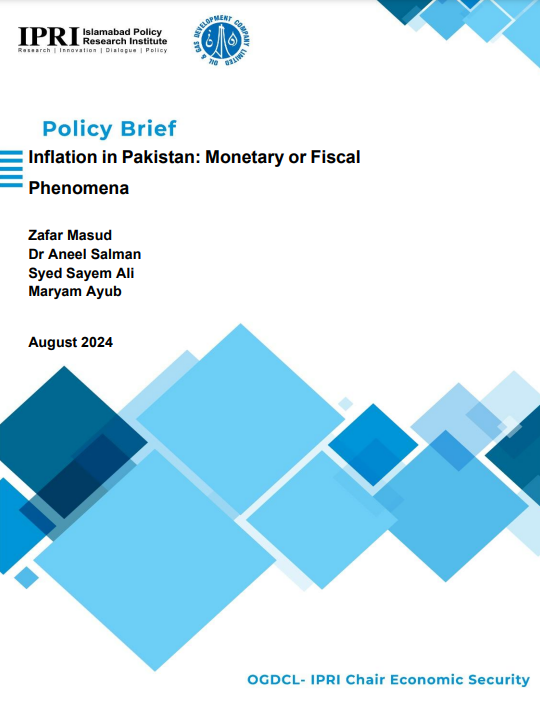Previous: Fiscal Stance of Government in Recent Inflationary Episode — IPRI Policy Brief Pt 5
Recent Inflationary Episode and the response of different countries
The pandemic has taken a toll on the world economies. Future uncertainties, loss of lives, and prolonged lockdown resulted in depressed economies. The decline in consumer spending globally, accelerated global food prices, and supply chain disruptions resulted in expansionary policies by almost all the countries around the world.
As the economies recovered from the pandemic, the economic uncertainties began to fade. However, the factors that aided in restoring economies contributed to the high levels of inflation globally. Since economies are globalised, one country’s inflation has a considerable impact on others.
Therefore, below are examples of how different countries tackled Post COVID inflation:
China
In 2022, the National Bureau of Statistics (NBS) of China reported the fastest increase in CPI since 2020. However, this increase of 2.8% was insignificant as compared to the inflationary increases that other economies witnessed. Moreover, core inflation (excluding food and energy prices) slowing to 0.6%. 1
China’s response to the pandemic, along with its policy responses were quite different from the rest of the world. China kept inflation under control by carefully employing expansionary monetary policy and avoiding massive stimulus injected into the economies like other countries in the West specifically. Its strong Zero COVID policy helped in reducing the overall demand.
Sri Lanka
In 2009, by the end of the civil war, Sri Lanka decided to rely on imports for the provision of goods to the domestic market, resulting in growing import bills. For years the country struggled to repay debts and this resulted increasing amount of debts.
However, the country was able to borrow since its tourism industry was performing well to support the economy before COVID-19 happened. This exerted pressure on the finances of the economy as the expenditure to run the economy shot up while the tax receipts fell.
The balance of payment crisis caused Sri Lanka to default with a foreign debt of more than USD 50 billion in April 2022 with y-o-y inflation rising to 69.8% in September 2022. 2
The stabilisation measures taken by the government included: economic stabilisation measures i.e. tightening of monetary policy to control inflation, increasing taxes, and lifting electricity and fuel subsidies.
IMF bailout program, debt restructuring with bilateral creditors, and privatisation program for commercial State-owned enterprises (SOEs) including Sri Lankan telecom, Sri Lankan insurance, and Sri Lankan Airlines.
India
India outperformed all the leading countries in post-COVID rebound, with the lowest inflation rates. India’s inflation maintained within the Reserve Bank of India’s target range, because of refusal to inject extra cash into the economy.
The government rather opted for direct food distribution to millions of people. Global rise in commodity prices, supply chain interruptions, and volatility in domestic demands affected flood inflation in the country.
The government announced a comprehensive post-COVID recovery program of Rs 6.28 lakh crore addressing every sector. 3
Programs like Pradhan Mantri Garib Kalyan Yojana 4 and Atmanirbhar Bharat Abhiyaan 5 aim the sectors like healthcare infrastructure, support vulnerable populations, and stimulate economic recovery through targeted fiscal and structural reforms.
Up Next: Proposed Framework for Controlling Inflation — IPRI Policy Brief Pt 7
Inflation in Pakistan: Monetary or Fiscal Phenomena
IPRI — Islamabad Policy Research Institute
Policy Brief by
- Zafar Masud
- Dr. Aneel Salman
- Syed Sayam Ali
- Maryam Ayub
August 2024
OGDCL – IPRI Chair Economic Security
